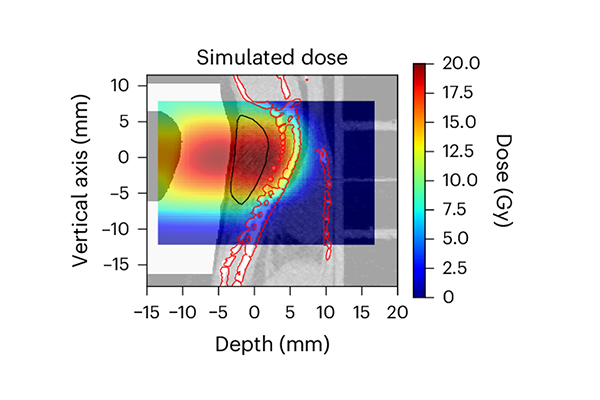New approaches to tumor therapy: Key publication from GSI published in Nature Physics

The ERC-funded research project BARB – Biomedical Applications of Radioactive ion Beams, led by Professor Marco Durante at the GSI Helmholtz Centre, has achieved a major milestone: the first animal tumor treatment using radioactive ion beams (RIBs) has been successfully demonstrated and published in Nature Physics. This breakthrough advances particle therapy, combining treatment and imaging in a single step—potentially solving the persistent challenge of range uncertainty in current therapies.
While the concept of RIBs was proposed decades ago at Lawrence Berkeley Laboratory, only now—thanks to the intense beams at GSI/FAIR's Phase 0 operations—has it become technically feasible. This study marks the first realistic demonstration of the idea's potential.
" Particle therapy is experiencing rapid growth and is potentially the most effective and precise radiotherapy technique. However, its application is still limited by technical limitations such as inadequate image guidance," explains Prof. Durante. Using the same beam for both treatment and real-time imaging could enhance precision, enabling better treatment of metastases, tumors near sensitive areas, and even non-cancerous conditions like cardiac arrhythmias.
The researchers successfully treated a mouse osteosarcoma with a radioactive carbon ion beam (¹¹C), achieving complete tumor control with high precision and no neurological damage—despite the tumor’s location near the spinal cord.
A crucial element in this success was a high-resolution in-beam PET scanner, developed at LMU Munich under Prof. Katia Parodi, in collaboration with Japan’s QST-Chiba. Originally built for another ERC project (SIRMIO), the PET system was adapted within BARB to enable real-time monitoring of RIB therapy.
LMU's Giulio Lovatti, co-first author, handled the PET data analysis, helping confirm the feasibility and effectiveness of the approach.
" BARB impressively demonstrates how applied nuclear physics can provide direct impetus for medical applications," says Prof. Durante. BARB brought together multiple GSI/FAIR research pillars and external partners like LMU Munich in a successful interdisciplinary collaboration.

FLUKA simulation showing the expected 11C-ion dose (in Gy) distribution in the µCT of the mouse in the sagittal view. Doses are normalized to the planned target dose.
The main goal—demonstrating in vivo RIB therapy with real-time PET-based range verification—has now been achieved. Looking ahead, the team plans to test shorter-lived isotopes for faster feedback and stronger imaging signals. These future experiments will use the Super-FRS fragment separator currently under construction at FAIR.
The experience gained through BARB is now feeding into Prof. Durante’s next ERC project: HI-FLASH (Heavy Ion FLASH). Final BARB experiments, completed in May, will be published in additional leading journals.
Reference:
Boscolo, D., Lovatti, G., Sokol, O. et al. Image-guided treatment of mouse tumours with radioactive ion beams. Nat. Phys. (2025). https://doi.org/10.1038/s41567-025-02993-8